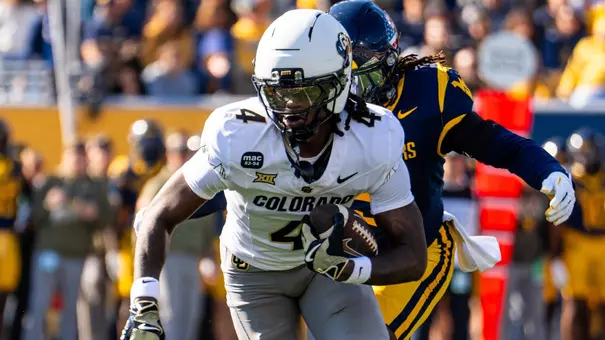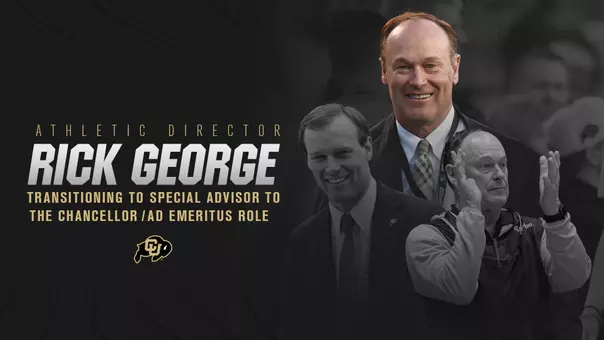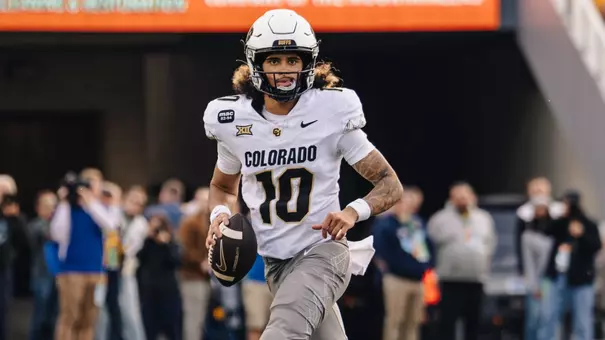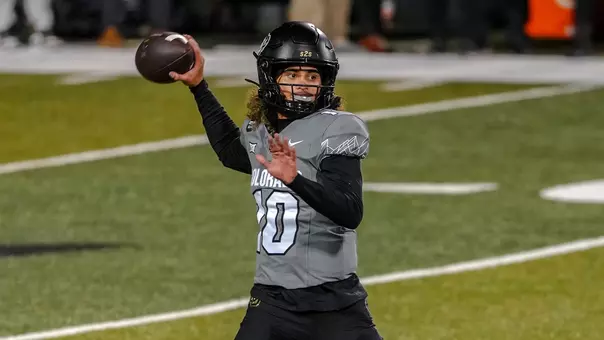Colorado University Athletics
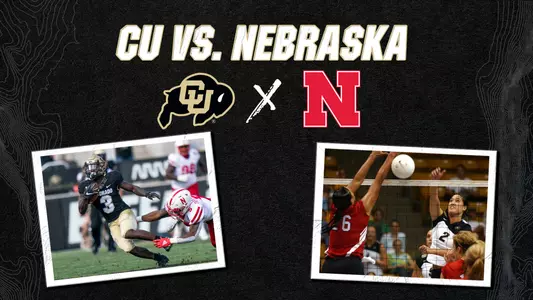
Top Rivalries Series: Part 4 Of 5, Nebraska
June 13, 2020 | Football, General
BOULDER — There are longer rivalries in Colorado Buffaloes history, and rivalries with more games over the years. There are rivalries bolstered by more immediate geographic proximity, and rivalries whose fires have cooled over time, then been rekindled.
But when it comes to making a Buffs fan's blood boil, there is still only one school guaranteed to fan the flames with a mere mention:
Nebraska.
Never mind that the two schools are no longer even in the same conference.
After becoming league brethren in 1948, when CU joined the Big Seven, they finally parted ways after the 2010-11 school year. Colorado announced in the summer of 2010 that the Buffaloes would be heading to the Pac-12 in time for the 2011-12 season; one day later Nebraska announced a planned departure for the Big Ten.
But one needs only to look at the last two seasons, when the two schools played a home-and-home series after a seven-year hiatus, to see the deep-seated emotions that befit a rivalry. The embers that had been cooling since 2011 fired back up again in a hurry, with message boards and social media dialing up to a fever pitch. The fact that Colorado then dealt Cornhuskers legend Scott Frost a 33-28 loss in his first game ever as NU's head coach in 2018 — in Lincoln, no less — only bumped the needle up several degrees, as did the Buffaloes' dramatic 34-31 overtime win in 2019.
But the Colorado-Nebraska rivalry was not always a particular hot button for either program.
For starters, the two programs faced each other in football only six times before CU joined the Big Seven in 1948, with the first meeting coming in 1898 (when Nebraska was still known as the "Bugeaters").
But even when the two schools became members of the same conference, the rivalry was seldom more intense than that with any other league rival.
That began to change, however, when Nebraska began emerging as a national power under Bob Devaney in the 1960s. As Nebraska's national stature grew, so did the importance of the game. Eddie Crowder's Buffs recorded a signature win over Devaney's Cornhuskers in 1967, setting the stage for a second place Big Eight finish and Bluebonnet Bowl appearance.
But that proved to be Colorado's last win over Nebraska for nearly two decades — and it was in that interim that the rivalry suddenly grew legs and became a red-letter game for both programs.
That turning point came courtesy of a young defensive coordinator from Michigan who accepted the head coaching job at Colorado in 1982. Bill McCartney had barely stepped foot on campus before he declared that Nebraska was the standard he wanted to match as the Buffaloes' head coach — and the Cornhuskers would be the Buffaloes' No. 1 rival.
"Nebraska was the greatest rivalry in the history of Colorado athletics," said longtime Colorado coach and administrator Ceal Barry in a recent interview. "It was such an awesome rivalry, particularly when Bill McCartney came and he put a big red circle around Nebraska and said, 'That's the standard for football.'"
McCartney then never missed an opportunity to hammer the point home. He banned the color red from CU's football and athletic facilities. Even reporters who attended practices were strongly discouraged from wearing red while on the fields. CU fans bought in and the importance of the game continued to grow.
Nebraska did its best to ignore McCartney's push. But CU's coach finally got the Cornhuskers' full attention in 1986 when the Buffaloes took a 20-10 win over No. 3 Nebraska in Boulder.
Three years later came another win over the Huskers in Boulder, 27-21, along with a Big Eight title and unbeaten 1989 regular season. One year later, Colorado beat Nebraska again, rallying from a 12-0 deficit with 27 fourth-quarter points for a 27-12 win in Lincoln. That paved the way for another Big Eight title for the Buffs and an Orange Bowl rematch with Notre Dame, with Colorado ultimately claiming a win and the program's first football national championship.
The win hit hard in Lincoln. Much to the chagrin of Cornhusker nation, it meant McCartney won a national championship before Nebraska's Tom Osborne. NU's coach reportedly then refused to vote the Buffs No. 1 in the final coaches poll, which resulted in a "split" national championship, with Georgia Tech winning the UPI title.
The rivalry then continued with the formation of the Big 12. The new league meant the end of another traditional Big Eight rivalry, as Oklahoma and Nebraska found themselves in different divisions and thus did not play every year.
That moved the CU-NU game to the end of the regular season, where it grabbed national attention on an annual basis over the Thanksgiving weekend.
Nebraska temporarily regained control of the series after McCartney's departure. But Gary Barnett's 2001 team turned the tide again with a 62-36 win in 2001. That gave the Buffs the Big 12 North title — they then proceeded to win the league title with a win over Texas — and also signaled the beginning of the end of Nebraska's status as a national power.
The two teams played their final game as league rivals in 2010, then resumed the series in 2018 and '19.
But the Nebraska rivalry wasn't limited to football. At the same time McCartney's program was rising to the top in the 1980s, Colorado's fledgling volleyball program found itself facing national power Nebraska on a regular basis.
Fans carried the rivalry theme over to CU's newest sport.
"You have to remember volleyball was also a fall sport and Nebraska had a great volleyball program," Barry remembered. "So it was a rivalry for volleyball. Then it was only natural for our fan base. They already hated Nebraska, because in football and volleyball, they had a high standard."
Success for CU in the volleyball series didn't come overnight. In fact, the Buffaloes lost 15 straight matches to the Cornhuskers before Brad Saindon's 1992 team finally broke through with a victory over No. 7 Nebraska in the Big Eight tournament to give Colorado its first Big Eight tourney title.
The volleyball rivalry then hit full stride. In 1993, Colorado defeated Nebraska in Boulder, setting up the Buffaloes' first regular season league title. CU became only the second team in Big Eight history to win a regular season crown, as Nebraska won the first 17 and the final two.
There were plenty of other major moments in the rivalry in the ensuing years. In 1994, CU played Nebraska in front of 3,685 in Boulder, a CU Events Center record for volleyball. A year later, the Buffs and Huskers squared off in front of 11,529 in Nebraska, a then-NCAA record crowd.
Then, in 1997, first-year head coach Pi'i Aiu's Buffaloes did what no other conference team had ever done — win at Nebraska. That was followed by a win over the Cornhuskers in Boulder, marking the first time NU had ever been swept in conference play.
Nine years later, the Buffs set another Events Center volleyball attendance record with a win over No. 1 Nebraska in front of 4,111. It was Nebraska's only loss of the season, as NU went on to win a national championship.
Those were the two sports that featured the fiercest rivalries with the Huskers. While there were some big moments in men's and women's basketball, they seldom reached the degree of importance that came with the football and volleyball matchups.
In men's basketball, the series is virtually even — 76-72 in NU's favor — and the two programs haven't played since 2011. Colorado holds a 41-28 lead in women's basketball, with the Barry years seeing the Buffs dominate the series. Her teams held a commanding 35-14 edge over the Cornhuskers, including a nine-game win streak from 2000 through 2004.
Contact: Neill.Woelk@Colorado.edu


